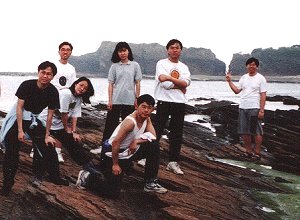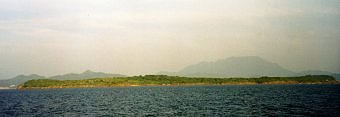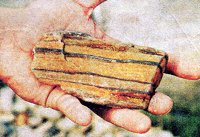Walk along the coast and the geo - "Jam Ken Chau" is not far away.
("Jam" means cut and "Ken" means neck). It is originally called
"Dun Tau Chau". ("Dun" means cut, "Tau" means head). Jam Ken Chau used to
link with the tip of the island. However, it was separated and has finally formed the
headland.
Why is it called "Jam Ken Chau"?
Please have a look at the place to which the gentleman is pointing. Can you imagine now?

|

Owing
to its fantastic landscape, there are often light breezes and you surely feel refreshed.
You can either walk along the coast or choose to walk back to the main trail leading to
"Wong Ye Wan". Mind you that there are
a lot of seashells and coral. Don't miss them and pick some to commemroate your wonderful
walk! |














